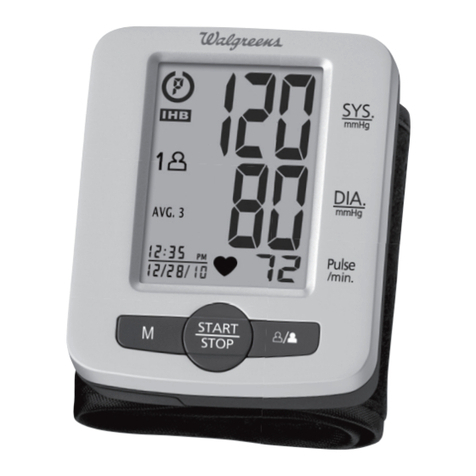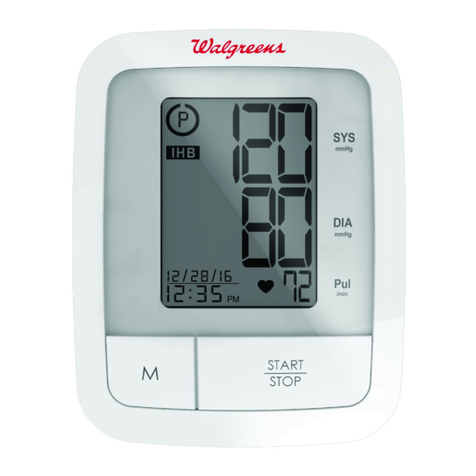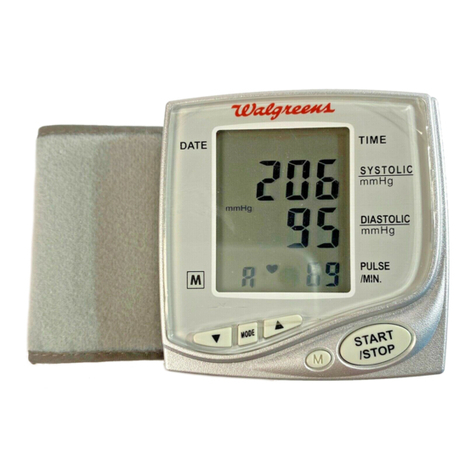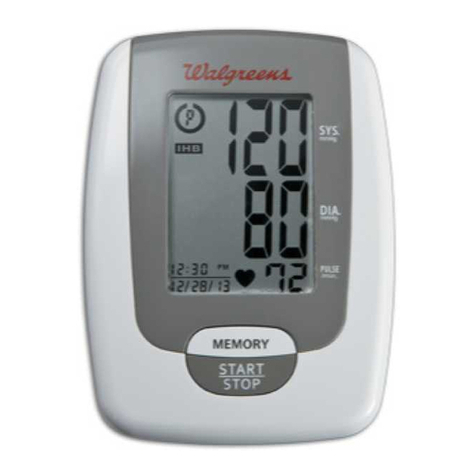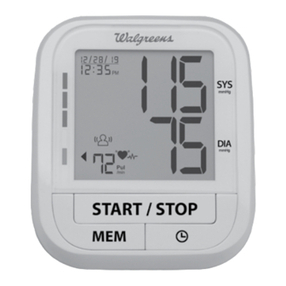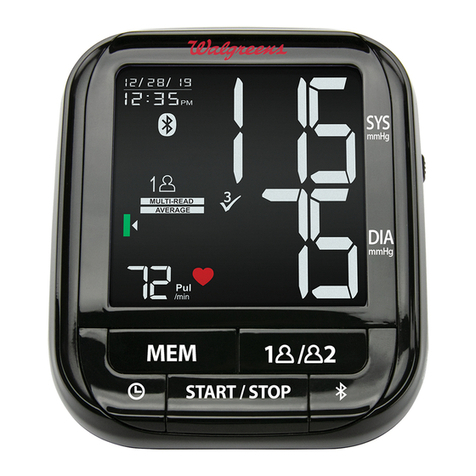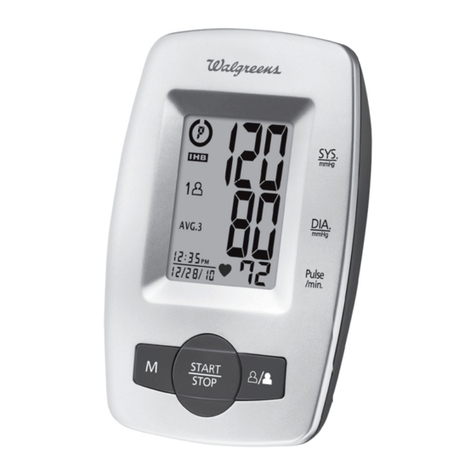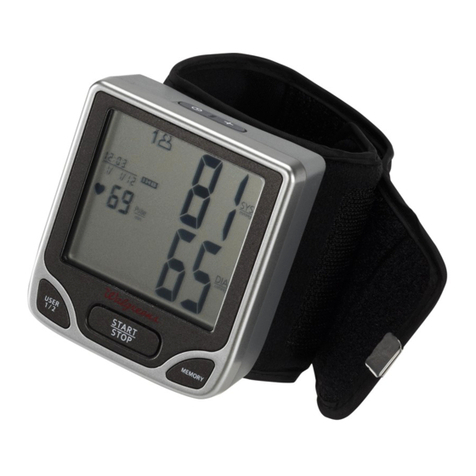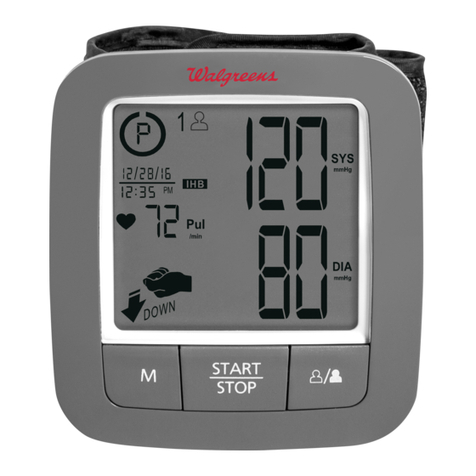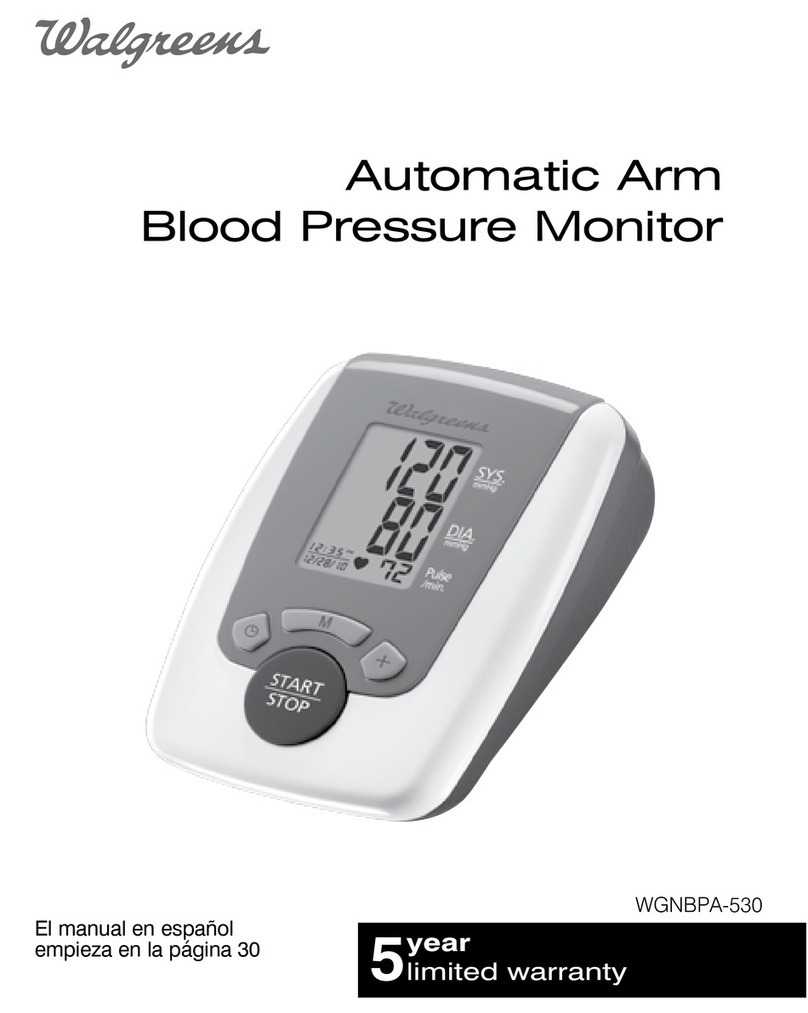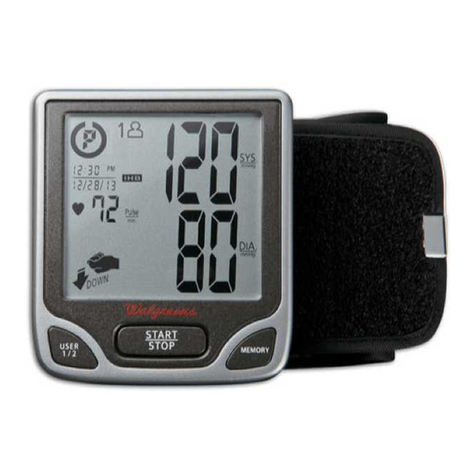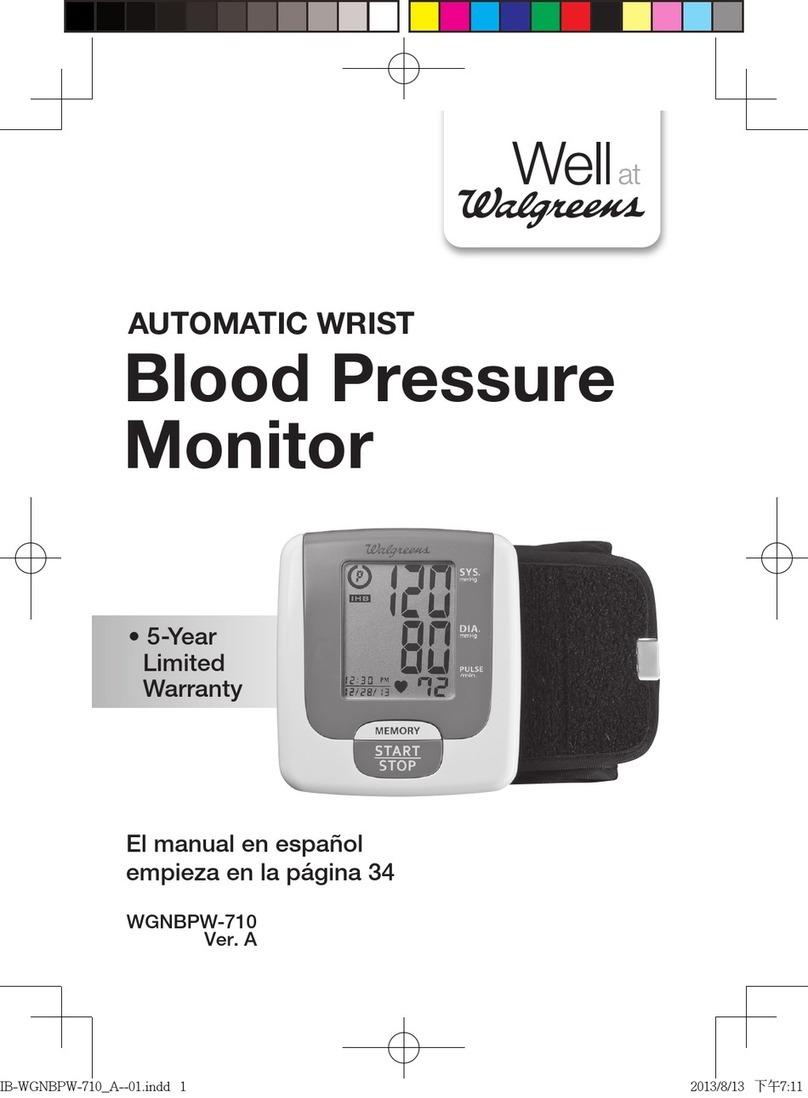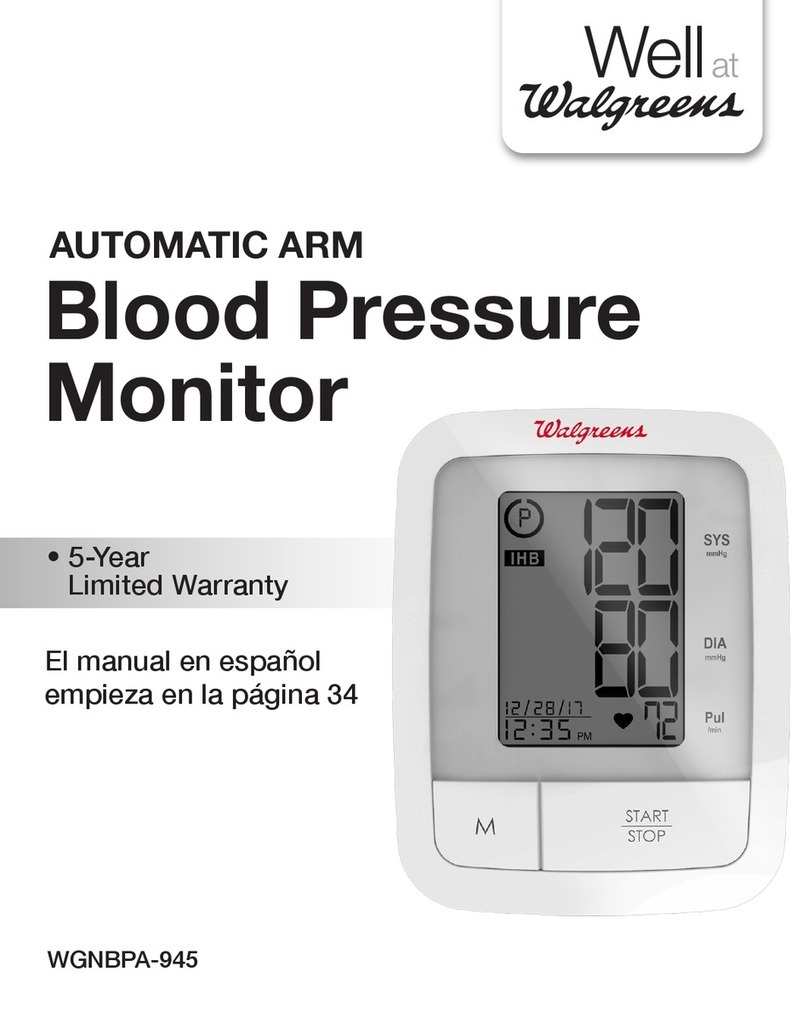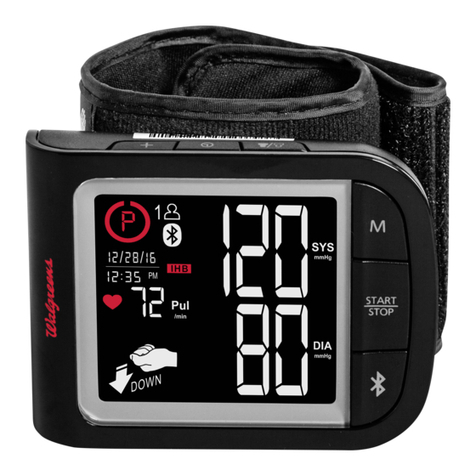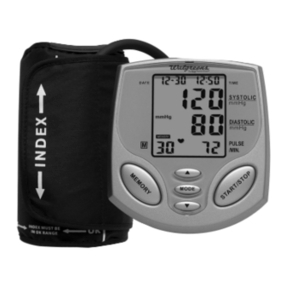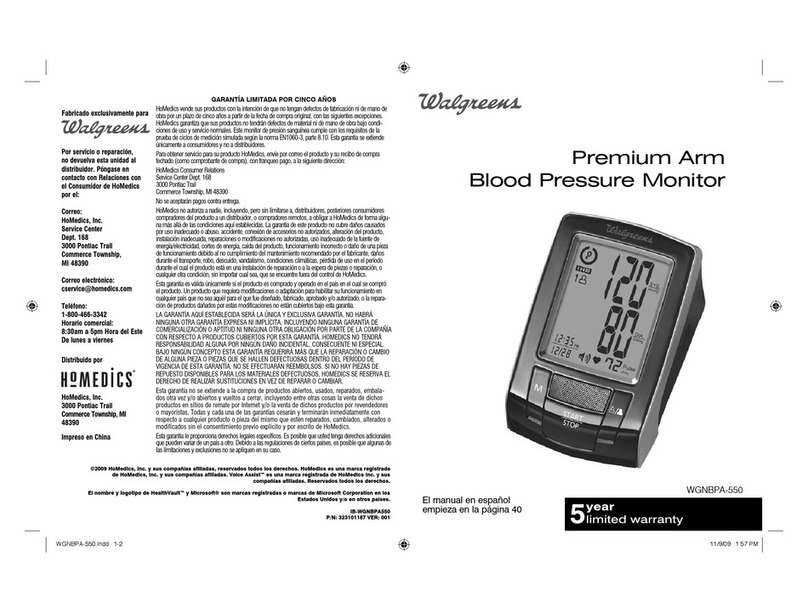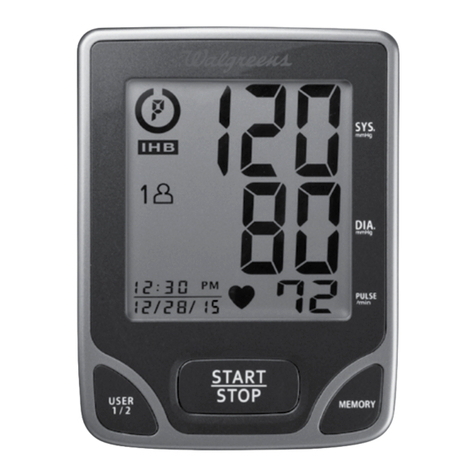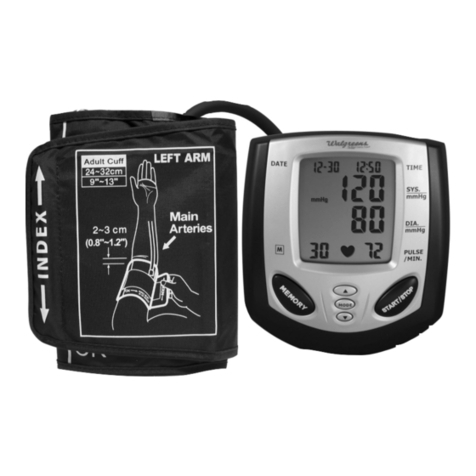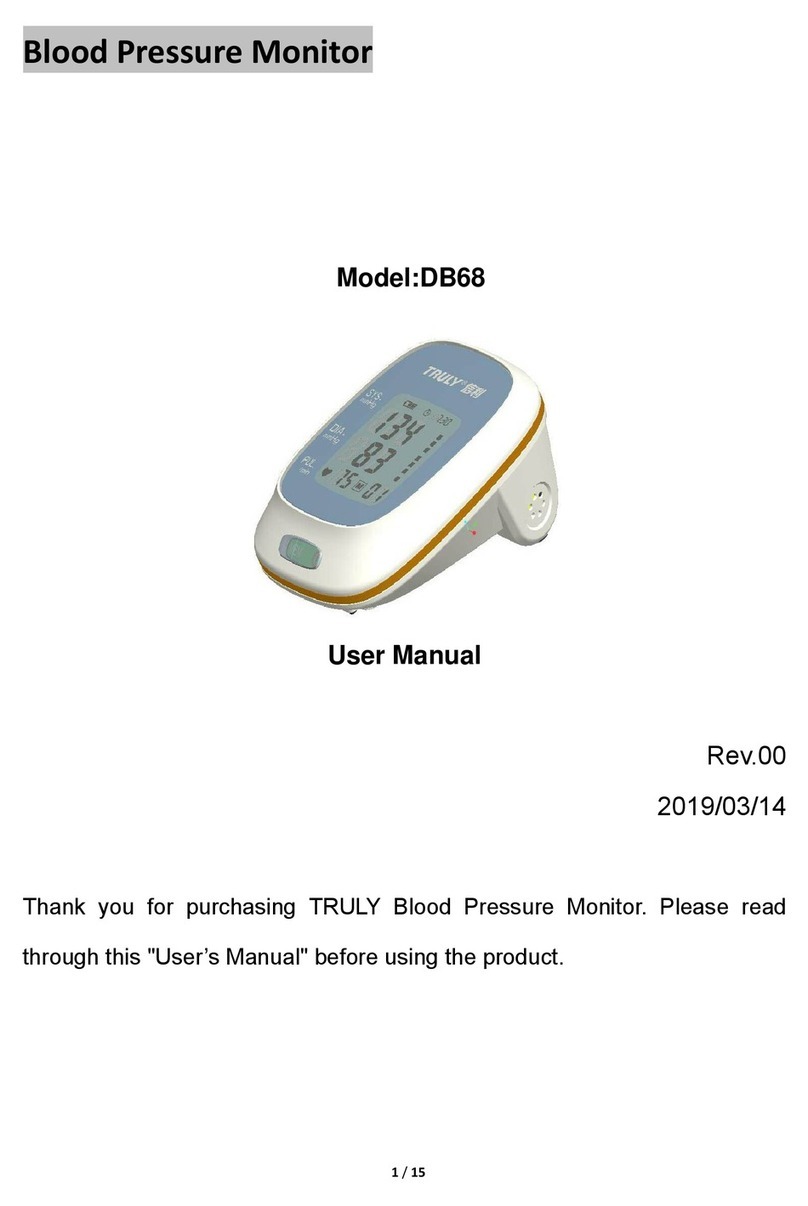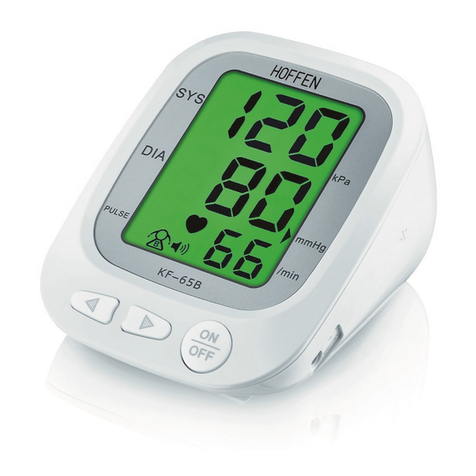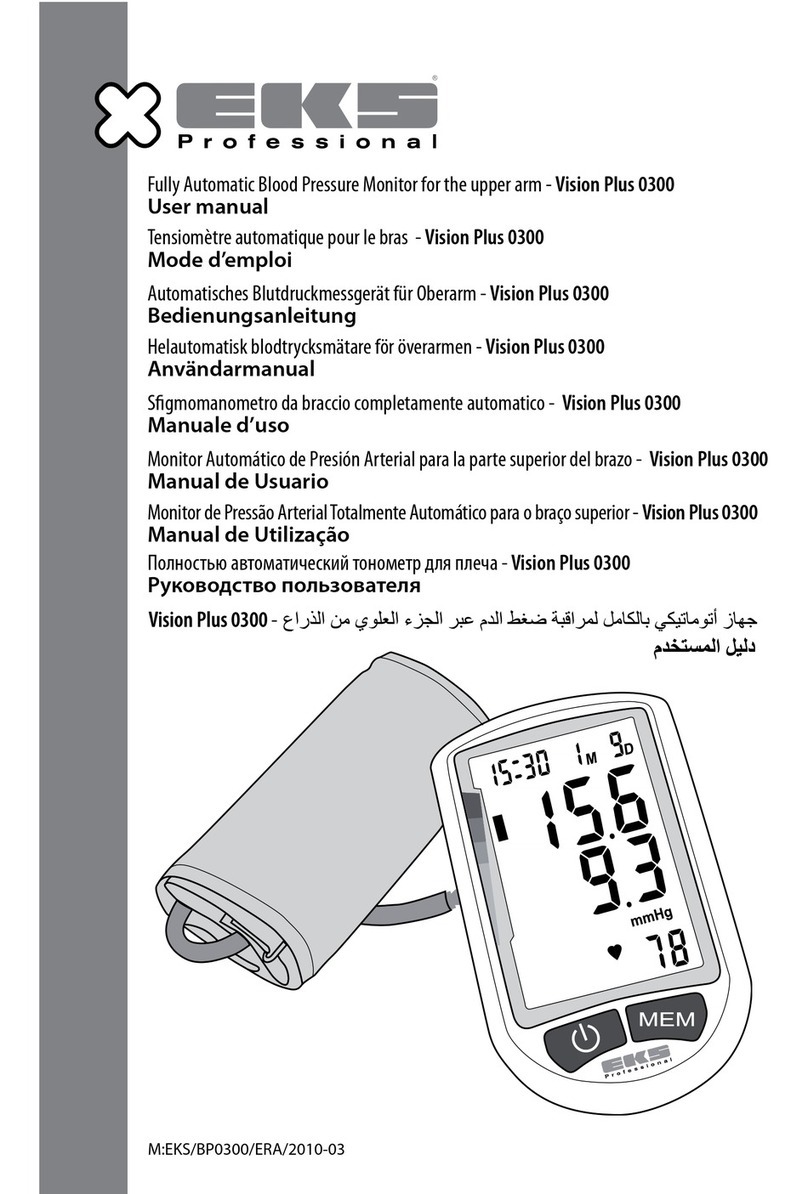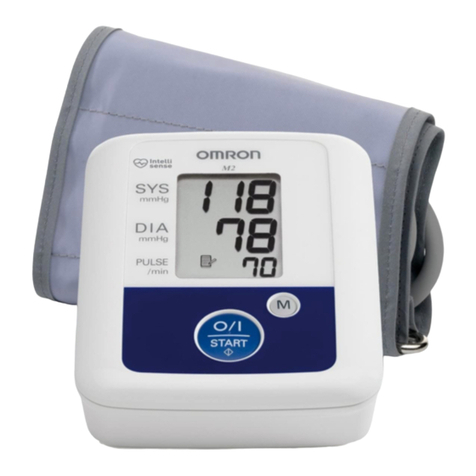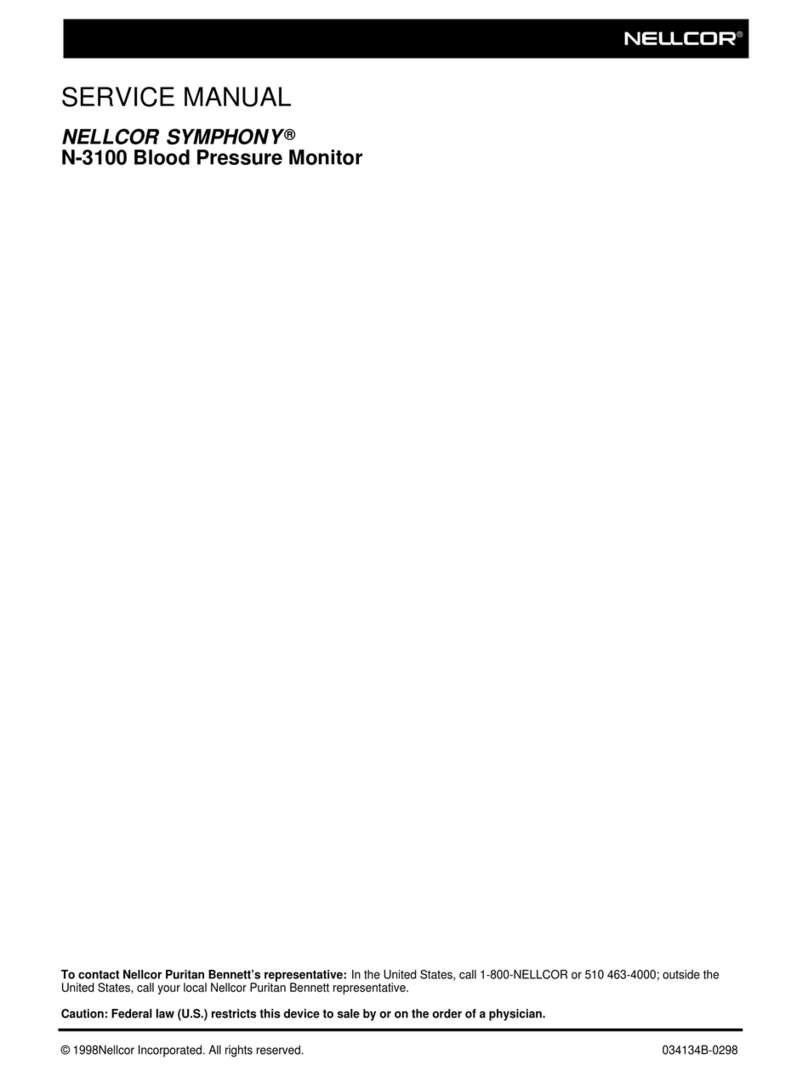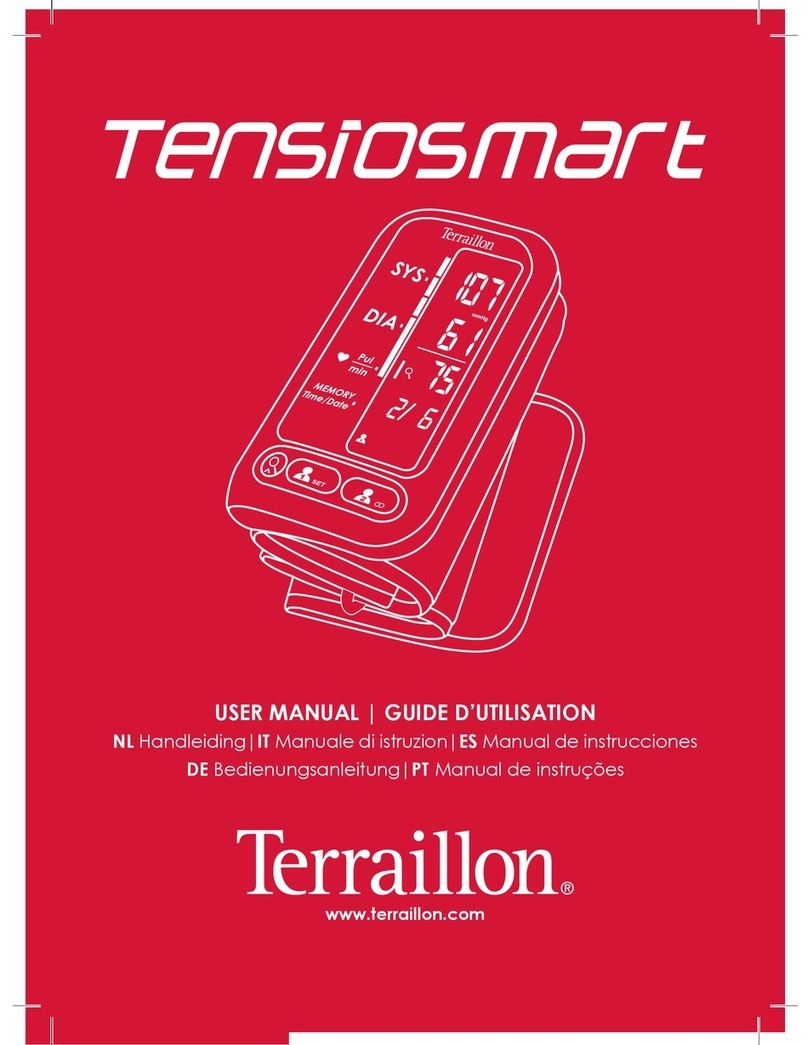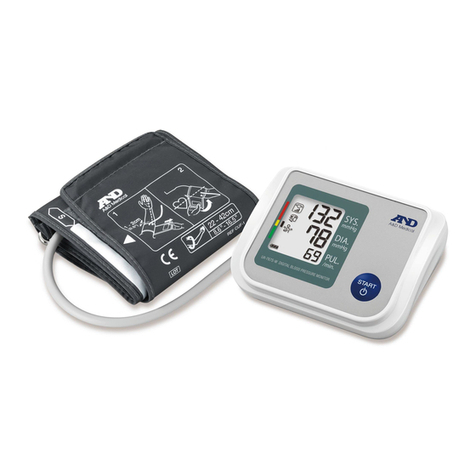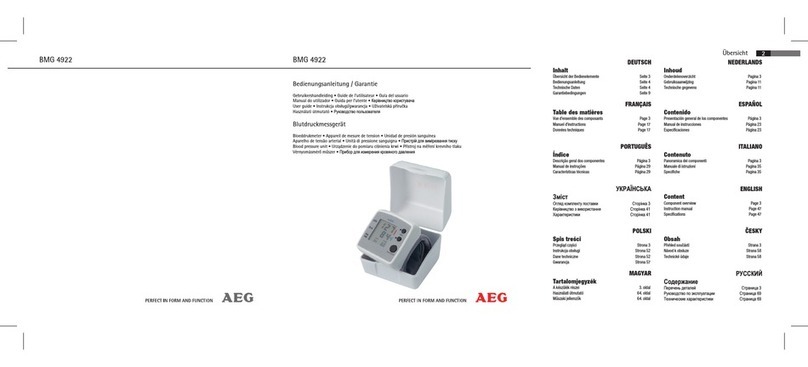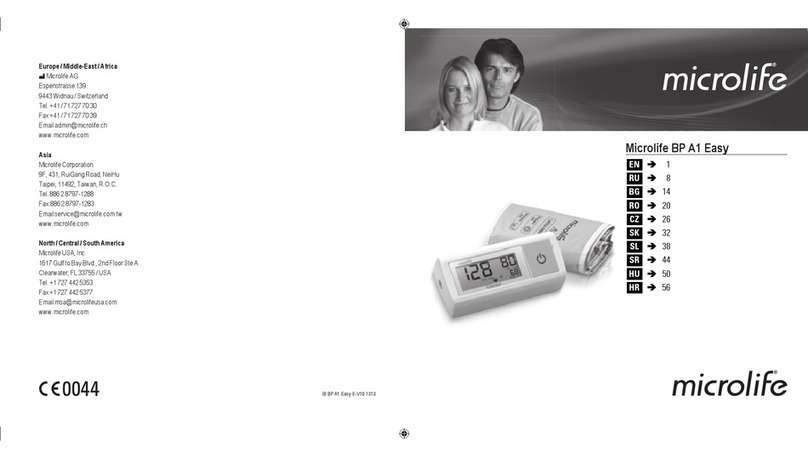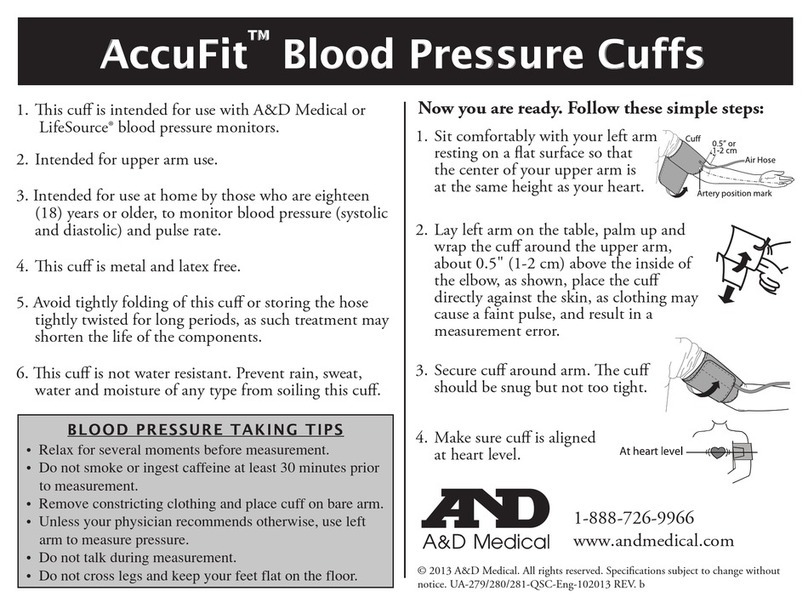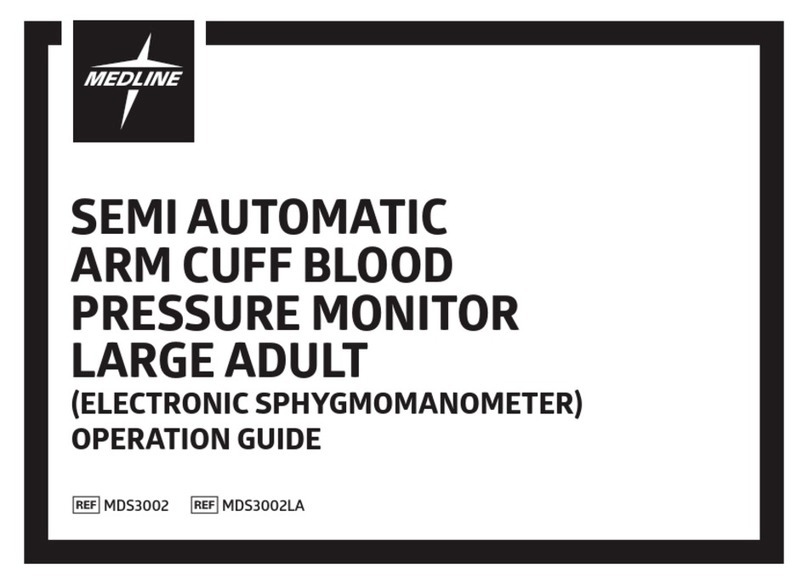
43
IMPORTANT PRODUCT NOTICES AND
SAFETY INSTRUCTIONS
When using your blood pressure monitor, basic precautions should
always be followed. Please read and follow all instructions and
warnings before using this product. Save these instructions for future
reference.
• Please note that this is a home healthcare product only and it is not
intended to serve as a substitute for the advice of a physician or
medical professional.
• This device uses the oscillometric method to measure systolic and
diastolic blood pressure, as well as heart rate.
• Do not use this device for diagnosis or treatment of any health
problem or disease. Measurement results are for reference only.
Consult a healthcare professional for interpretation of blood pressure
measurements. Contact your physician if you have or suspect any
medical problem. Do not change your medications without the advice
of your physician or healthcare professional.
• This product is not suitable for people with arrhythmias. This device
may have difficulty determining the proper blood pressure for
pregnant women, individuals with irregular heartbeat, diabetes, poor
circulation of blood, kidney problems or for users who have suffered
from a stroke.
• Not suitable for people undergoing intravenous injection on any limb
and for those with pre-eclampsia.
• Those who have had a mastectomy surgery (especially when lymph
nodes have been removed), it is recommended to take measurements
on the unaffected side.
• Excessive use may result in blood flow interference, which is likely
to cause uncomfortable sensations, such as partial subcutaneous
hemorrhage, or temporary numbness to your wrist. In general these
symptoms should not last long. However, if you do not recover in
time, please seek advice from a medical professional.
• When used along with other medical electronic equipment on the
same arm, pressurization of the cuff may cause the other devices to
temporarily malfunction.
• Consult your physician before measuring blood pressure at the wrist if
you have any of the following conditions: Severe hypertension, severe
diabetes, severe arteriosclerosis, severe kidney disease or vascular
disease that may compromise circulation.
• The pulse display is not suitable for checking the frequency of heart
pacemakers.
• Electromagnetic interference: The device contains sensitive electronic
components. Avoid strong electrical or electromagnetic fields in
the direct vicinity of the device (e.g. mobile telephones, microwave
ovens). These may lead to temporary impairment of measurement
accuracy.
• Consider the electromagnetic compatibility of the device (ex. power
disturbance, radio frequency interference etc.). Please use this device
in a home health care environment only.
• Use blood pressure monitor only for its intended use.
• Do not wrap the cuff around body parts other than your wrist.
• Not for use by or on persons under the age of 18.
• Do not use this device on infants, children, or those who cannot
express their own intention.
• Use only 1.5V “AAA” alkaline batteries for power supply.
Blood pressure measurements determined with this device are
equivalent to those obtained by a trained observer using the cuff/
stethoscope auscultatory method, within the accuracy limits prescribed
by the American National Standard, Manual, electronic, or automated
sphygmomanometers. The sphygmomanometer was clinically
investigated according to the requirement of ISO 81060-2:2013.
